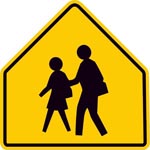Center, Nebraska, Children, Youth, Families, and Schools

Nebraska Center for Research on Children, Youth, Families, and Schools: Faculty Publications
Document Type
Article
Date of this Version
2022
Citation
Published in Engaging Boys and Men in Sexual Assault Prevention, edited by Lindsay Orchowski and Alan Berkowitz, pages 71–95
doi: 10.1016/B978-0-12-819202-3.00004-3
Abstract
Prevention of sexual aggression (which ranges from perpetration of unwanted sexual contact to attempted/completed rape) is a complex public health and safety issue that requires attention to multiple levels of social ecology (Centers for Disease Control and Prevention, 2004). The social ecological model provides a framework for understanding how risk and protective factors for sexual aggression exist at multiple levels, with some factors being more proximal such as the individual attitudes, and other factors being more distal such as the broader culture (e.g., laws and policies) (Centers for Disease Control and Prevention, 2013). Indeed, research indicates a variety of risk factors (factors associated with increased risk for sexual aggression) and protective factors (factors associated with decreased risk for sexual aggression) that exist across the social ecology (Basile et al., 2016; Tharp et al., 2013). Understanding risk and protective factors across multiple levels of the ecology is key to preventing the complex behavior of sexual aggression. In the current chapter, we review risk and protective factors for sexual aggression among men and boys at multiple levels of the social ecology. Of note, although we earnestly reviewed the interdisciplinary research, this chapter is not meant to be a systematic review. Rather, the purpose of this chapter is to discuss various levels of the social ecology and provide examples of risk and protective factors for the perpetration of sexual assault within each of these levels. The foundational information provided in this chapter sets the stage for subsequent chapters in this edition that focuses on strategies for the primary prevention of sexual aggression.
Included in
Bilingual, Multilingual, and Multicultural Education Commons, Child Psychology Commons, Counseling Psychology Commons, Developmental Psychology Commons, Early Childhood Education Commons, Educational Psychology Commons, Family, Life Course, and Society Commons, Other Social and Behavioral Sciences Commons


Comments
Copyright © 2022, Elsevier. Used by permission